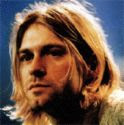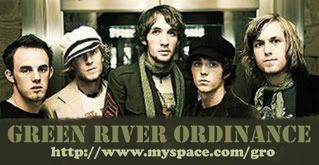 Grunge Fashion
Grunge FashionGrunge concerts were known for being straightforward, high-energy performances. Grunge bands rejected the complex and high budget presentations of many musical genres, including the use of complex light arrays, pyrotechnics, and other visual effects unrelated to playing the music. Stage acting was generally avoided. Instead the bands presented themselves as no different from a minor local band. Jack Endino said in the 1996 documentary Hype! that Seattle bands were inconsistent live performers, since their primary objective was not to be entertainers, but simply to "rock out." However, concerts did involve a level of interactivity; fans and musicians alike would participate in stage diving, crowd surfing, headbanging, pogoing, and moshing.
Clothing commonly worn by grunge musicians in Washington consisted of thrift store items and the typical outdoor clothing (most notably flannel shirts) of the region, as well as a general unkempt appearance. The style did not evolve out of a conscious attempt to create an appealing fashion; music journalist Charles R. Cross said, "Kurt Cobain was just too lazy to shampoo," and Sub Pop's Jonathan Poneman said, "This [clothing] is cheap, it's durable, and it's kind of timeless. It also runs against the grain of the whole flashy aesthetic that existed in the 80's."
History
Grunge's sound partly results from Seattle's isolation from other music scenes. As Sub Pop's Jonathan Poneman noted, "Seattle was a perfect example of a secondary city with an active music scene that was completely ignored by an American media fixated on Los Angeles and New York." Mark Arm claimed that the isolation meant, "this one corner of the map was being really inbred and ripping off each other's ideas." Grunge evolved from the local punk rock scene, and was inspired by bands such as The Fartz, The U-Men, 10 Minute Warning, The Accüsed and the Fastbacks. Additionally, the slow, heavy, and sludgy style of The Melvins was a significant influence on the grunge sound.
Outside the Pacific Northwest, a number of artists and music scenes influenced grunge. Alternative rock bands from the Northeastern United States, including Sonic Youth, Pixies, and Dinosaur Jr., are important influences on the genre. Through their patronage of Seattle bands, Sonic Youth "inadvertently nurtured" the grunge scene, and reinforced the fiercely independent attitudes of its musicians. The influence of the Pixies on Nirvana was noted by Kurt Cobain, who commented in a Rolling Stone interview that he "connected with the band so heavily that I should be in that band." Nirvana's use of the Pixies' "soft verse, hard chorus" popularized this stylistic approach in both grunge and other alternative rock subgenres.
Aside from the genre's punk and alternative rock roots, many grunge bands were equally influenced by heavy metal of the early 1970s. Clinton Heylin, author of Babylon's Burning: From Punk to Grunge, cited Black Sabbath as "perhaps the most ubiquitous pre-punk influence on the northwest scene." Black Sabbath undeniably played a role in shaping the grunge sound, whether with their own records or the records they inspired. The influence of Led Zeppelin is also evident, particularly in the work of Soundgarden, whom Q magazine noted were "in thrall to '70s rock, but contemptuous of the genre's overt sexism and machismo." The Los Angeles hardcore punk band Black Flag's 1984 record My War, where the band combined heavy metal with their traditional sound, made a strong impact in Seattle. Mudhoney's Steve Turner commented, "A lot of other people around the country hated the fact that Black Flag slowed down ... but up here it was really great ... we were like 'Yay!' They were weird and fucked-up sounding." Turner explained grunge's integration of metal influences, noting, "Hard rock and metal was never that much of an enemy of punk like it was for other scenes. Here, it was like, 'There's only twenty people here, you can't really find a group to hate.'" Bands began to mix metal and punk in the Seattle music scene around 1984, with much of the credit for this fusion going to The U-Men.
The raw, distorted and feedback-intensive sound of some noise rock bands had an influence on grunge. Among them are Wisconsin's Killdozer, and most notably San Francisco's Flipper, a band known for its slowed-down and murky "noise punk." The Butthole Surfers' mix of punk, heavy metal and noise rock was a major influence, particularly on the early work of Soundgarden. Soundgarden and other early grunge bands were influenced by British post-punk bands such as Gang of Four and Bauhaus, which were popular in the early 1980s Seattle scene. After Neil Young played a few concerts with Pearl Jam and recorded the album Mirror Ball with them, some members of the media gave Young the title "Godfather of Grunge." This was grounded on his work with his band Crazy Horse and his regular use of distorted guitar, most notably on the album Rust Never Sleeps. A similarly influential, yet often overlooked, album is Neurotica by Redd Kross, about which the co-founder of Sub Pop said, "Neurotica was a life changer for me and for a lot of people in the Seattle music community."








June 14, 2009 at 10:40 PM
wow..never knew about these facts!
was a 'hard-core" ??!!
we got a godfather??!!
damn..so much to learn..so little time!